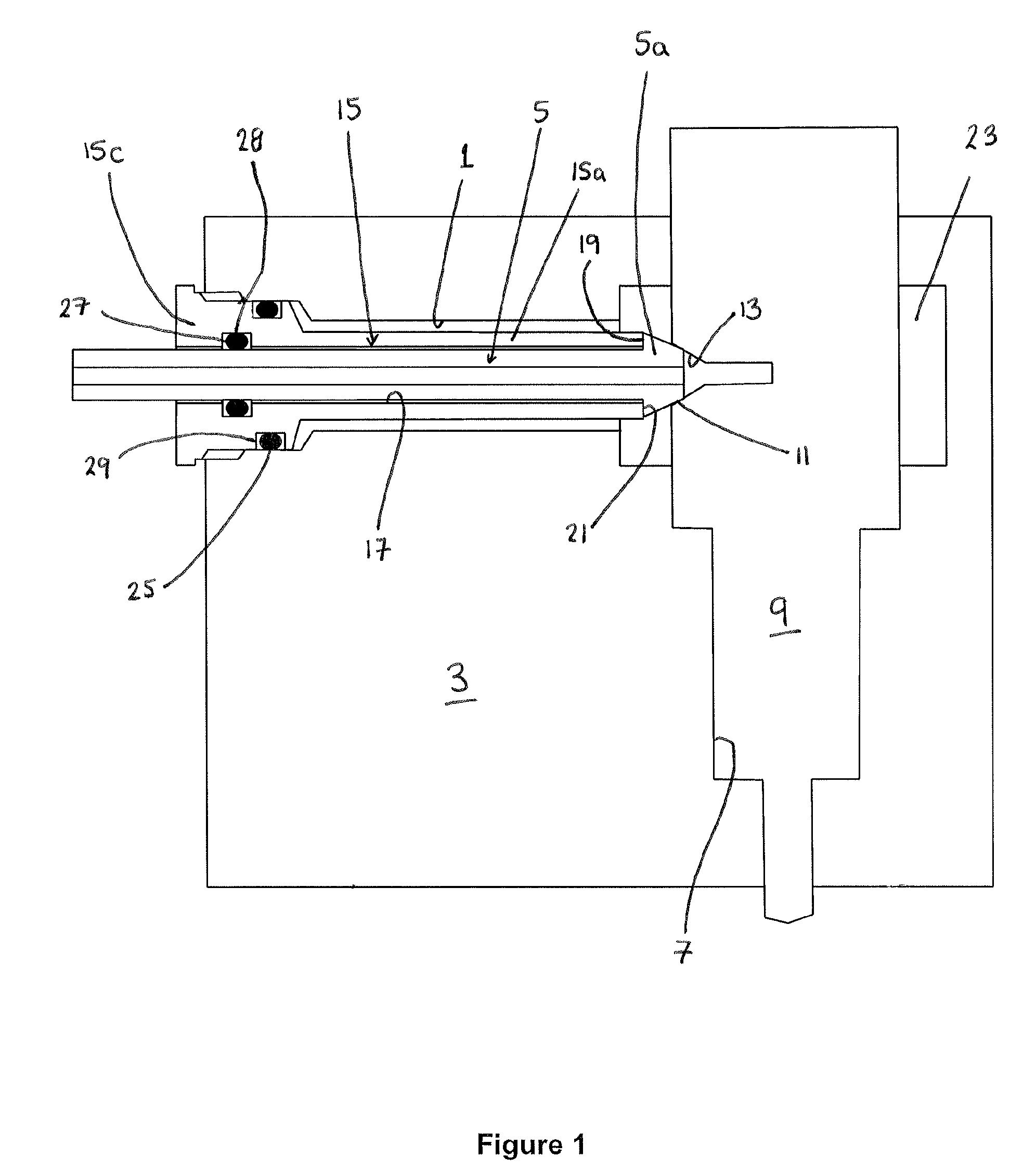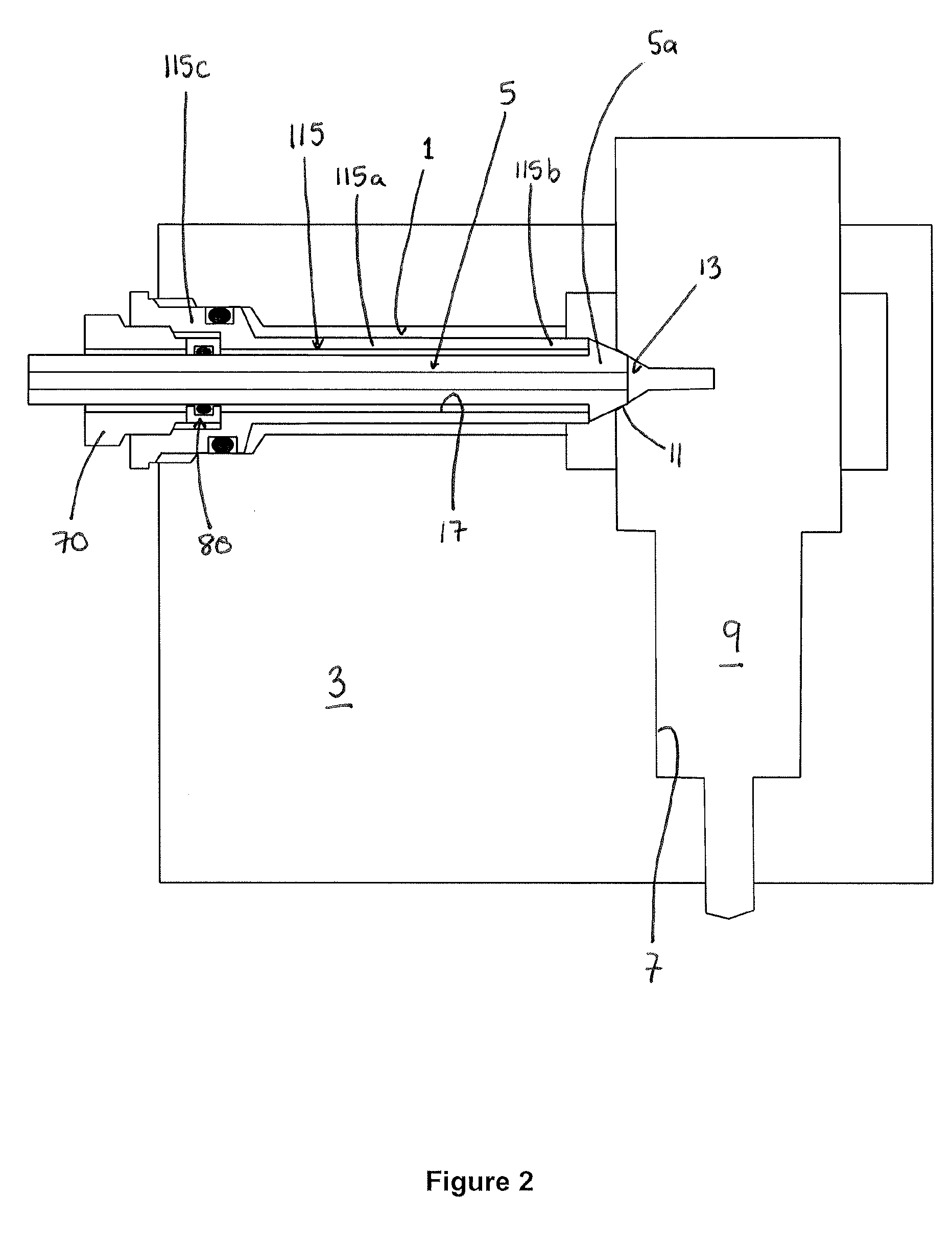Fuel pipe assembly and clamping means
a technology of clamping device and fuel pipe, which is applied in the direction of manufacturing tools, machines/engines, mechanical equipment, etc., can solve the problems of pipe failure, undesirable vibration and resonance (at engine vibration frequency), and pipe corrosion along the relatively long and flexible pipes, so as to reduce the radial clearance, enhance the clamping action, and reduce the axial distan
- Summary
- Abstract
- Description
- Claims
- Application Information
AI Technical Summary
Benefits of technology
Problems solved by technology
Method used
Image
Examples
Embodiment Construction
[0040]With reference to FIG. 1, in a prior art arrangement, a fuel pipe passage in the form of a transverse bore 1, within which a high pressure (HP) fuel pipe 5 is disposed, extends through cylinder head 3 to intersect with a bore (or “injector pocket”) 7 in which an injection nozzle 9 is housed. The distal end (or head) 5a of the fuel pipe 5 is provided with a male conical surface 11, which seals against a lateral seating face 13 on the body of the injection nozzle 9 when it is clamped in place by means of a tube nut 15. The tube nut 15 is adapted to be received within the bore 1 and has an elongate tubular region 15a at the injector (or distal) end and a radially enlarged region at its proximal end 15c to cooperate with an enlarged region of the transverse bore 1 at the outer surface of the cylinder head 3.
[0041]The tube nut 15 is provided with an axial through-bore 17 which receives the fuel pipe 5. The tube nut 15 has an axial length of substantially the length of the transvers...
PUM
| Property | Measurement | Unit |
|---|---|---|
| thickness | aaaaa | aaaaa |
| diameter | aaaaa | aaaaa |
| pressure | aaaaa | aaaaa |
Abstract
Description
Claims
Application Information
 Login to View More
Login to View More - R&D
- Intellectual Property
- Life Sciences
- Materials
- Tech Scout
- Unparalleled Data Quality
- Higher Quality Content
- 60% Fewer Hallucinations
Browse by: Latest US Patents, China's latest patents, Technical Efficacy Thesaurus, Application Domain, Technology Topic, Popular Technical Reports.
© 2025 PatSnap. All rights reserved.Legal|Privacy policy|Modern Slavery Act Transparency Statement|Sitemap|About US| Contact US: help@patsnap.com



